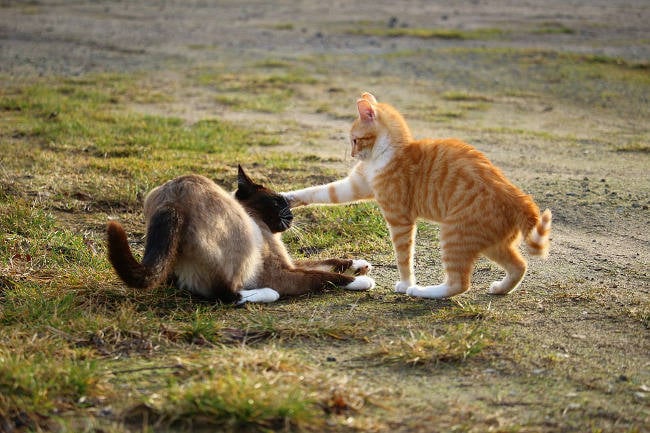Seeking insights into cat behavior, scientists turned to the internet and discovered that domesticated felines exhibit either “playful”, “agonistic” or “intermediate” behavior.
Led by Noema Gajdoš‑Kmecová, post-doctoral researcher at the University of Veterinary Medicine and Pharmacy in Košice, Slovakia, the team suggests their work may identify potential tension between cats and help owners manage the relationship to avoid escalation and the need for separation.
The researchers reached their conclusion after studying 105 video clips sourced from YouTube as well as those gleaned directly from cat owners showing interactions between 210 cats.
The team grouped cat behaviors into categories, including wrestling, chasing and vocalization, which they then used to assess the remaining cats. Cats were grouped based on the frequency and duration of the six behaviors.
For example, wrestling is defined at when a cat “engages in physical contact with another cat, whereby the focal cat appears to struggle with the other cat.”
“This can include pulling the cat toward itself with its forelegs and perform raking movements with the hind legs,” the study said.
- The IT decision-maker that really matters? Your pet
- Massive 3D catzilla gets crowds purring in busy Shinjuku district of Tokyo
- Hey, maybe we should all be cat-faced eco-warriors on our daily video chats
- Cats: Not a fan favourite when the critters are draped around an office packed with tech
Reciprocal wrestling was most closely associated with a group of playfully interacting cats, while vocalization and chasing were associated with the agonistic group. The intermediate group, while having characteristics of both, was more closely related to the playful group than the agonistic group, with prolonged exchanges of interactive behaviors being a predominant feature, according to the study published in Nature Scientific Reports this week.
Nonetheless, the work seems to contribute to the sum of human knowledge in that the findings could “provide valuable practical evidence which can be used to help owners detect signs of inter-cat tension in its early stages,” the authors claim.
Indeed, such intervention may be a matter of life or death for felines.
“Earlier detection and presentation to a clinical behavior professional can be expected to be more likely to result in the successful management of the relationship and prevent major issues which might lead to the relinquishment and/or euthanasia of one or both cats,” the study concluded.
The whole exercise seems like a strange inversion of the human propensity towards procrastination, which can so often lead to avoiding the tasking at hand by watching cat videos on the internet. What did the researchers find to do when they wanted to waste time? ®



